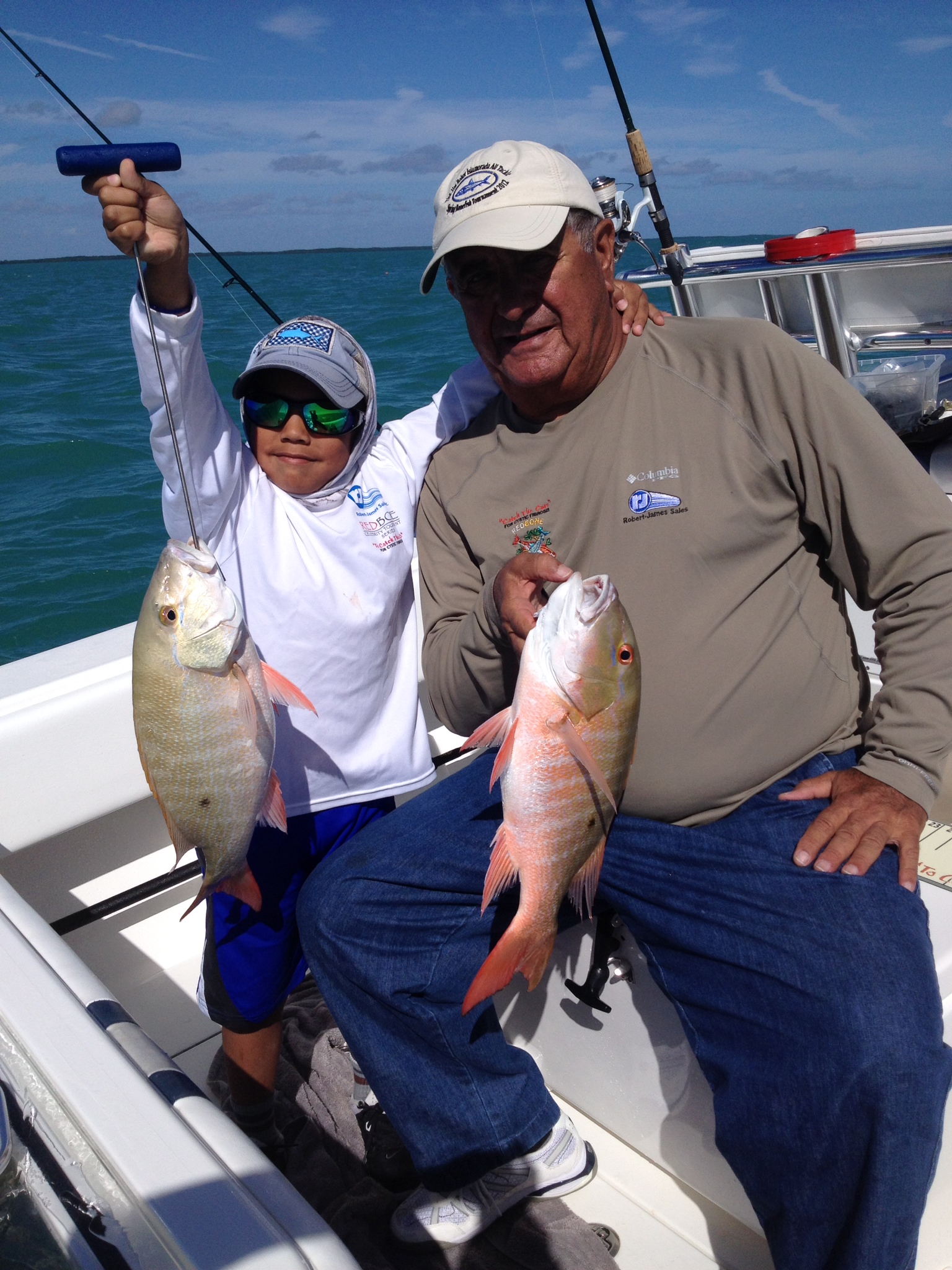The everglades offers some of the best snook fishing in the world
Today, we get a guest post from Richard Black of Black Fly Charters in Islamorada. We have fished with Richard a few times, most recently in the No Motor Zone of Everglades National Park. Richard is definitely one of my favorite guides to fish with as he encompasses all the enthusiasm and passion for fishing and guiding that I had at his age and still have today. It is so much fun to fish with someone, like Richard, who takes guiding to an art form.
If you enjoy this post from Richard, let us know and we will have more.
Versatility of fishing makes the Florida Keys special
by Richard Black
Winter in the Florida Keys can bring about vast changes in weather patterns on a daily basis. One day it can be 80°F and the next it can be 50°F. Constant changes in weather make for dramatic fluxes in water temperatures across Florida Bay.
I'm constantly asked, "Captain, what's biting?" or "What do you recommend targeting this time of year?" My answer is always the same: It's difficult to plan ahead this time of year.
My staple in the winter is to fish the area around Flamingo in Everglades National Park for a variety of species, with snook and redfish being the primary goal. But given the right conditions, bonefish and tarpon can be worthy options. When conditions are less than favorable on the bayside, we have some excellent options on the nearshore reefs where my bay boat can fish comfortably .
So how do I plan? Part of my daily routine is looking at weather forecast, and not just one, but several forecast sites, comparing notes from each and developing a personal forecast with the best available atmospheric science. This addiction to weather helps me predict fishing patterns and narrow my fishing options. With great technology at our fingertips, apps, like one my favorites from Navionics, make it easy to look at tides across a wide area. But tides are just part of the game and several other factors, such as wind direction, cloud cover, and barometric pressure must also be factored into the equation.
With major cold fronts rolling through only days apart, 360° revolving wind is common in a weeks time. Low-pressure systems bring clouds and changing wind speed and direction. Fronts usually start with an east wind and shift to the northwest before barreling though in sometimes incredibly short time frames (i.e., one day). As the system moves through, low pressure takes atmospheric weight off the water surface, promoting higher water levels. Depending on the strength of the system, water levels in Florida Bay can rise up to 10 inches in as little as 12 hours (which is dramatic change for our local ecology).
Once the front moves through, high pressure follows, accompanied by decreasing temperatures. High pressure forces atmospheric weight down on the water surface, squeezing water out and causing lower than normal tides. Often times, high pressure makes the flats of Florida Bay look like a putting green. The constant changes in weather and water levels really move fish around and keep you on your toes during the winter.
Fishing Report:
iwfa anglers with a quick picture of one of their double header redfish near Flamingo
This past week has been full of dramatic weather changes and water temperature. My Lowrance unit read water temperatures ranging from 55°F to 72°F. Air temperatures varied accordingly from 45°F-78°F. Luckily, the fishing was pretty good, with a couple slower days in the mix. I started the week off sight-fishing with two IWFA (International Womens Fishing Association) members targeting redfish, snook, trout and black drum on the flats. The ladies caught several quality reds over 30". A front started moving through the following day and we experienced a few rain showers in the morning but we're able to sight fish a few large trout on fly. As the tide fell out, the two ladies were able to catch good numbers of reds and several were double-headers.
Bonefish ready for release on islamorada flats
double header mutton snapper from islamorada patch reefs.
The next day was dedicated to bonefishing before water temperatures got too frigid for the rest of the week. My customer was all for trying his luck on the Grey Ghost. In the morning, we casted pilchards on rubble for some table fare and were able to catch a few black grouper (released, season closed until May 1) and some mangrove snapper. Once the sun was above us and water temperatures rose, we started poling the edges of ocean side flats. We located a school of mudding bonefish and my angler executed a well placed cast 4 ft. in front of the school. Seconds later, we connected to the first bonefish of the day. After a quick picture and a DNA fin clip sample, we released a beautiful and healthy bonefish. The bonefish were feeding aggressively so we decided to make a change to artificial. Throwing small jigs, we sight fished 9 more, finishing the day with a total of 10 bonefish, all genetically tagged for a Bonefish & Tarpon Trust research project.
The next few days were marked by frigid temperatures and north winds so we hit the patch reefs on the ocean side of Islamorada. The Keys nearshore reefs are bordered by landmass and barrier reefs, keeping nearshore waters protected from extensive wave action. This allows for some great action on a variety of species of grouper, snapper, and other reef species. At the end of the week, we were able to put together a great bite of snapper, grouper, jacks, barracuda, hog fish, porgy and mackerel. Casting live pilchards and shrimp anglers of all ages and skill levels can have a blast fishing the shallow water reefs.
Thanks for following,
Capt. Richard Black
305-395-0311
Blackflycharters.com
If you enjoyed this post, please share on social media by clicking the share button below and selecting your favorite social platform








